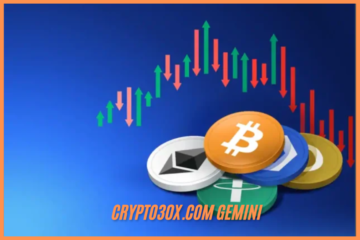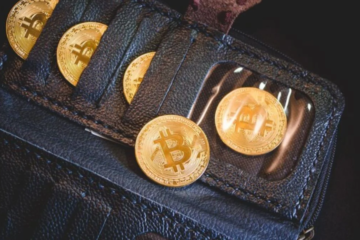Introduction
Silver has held a significant place in the world of investment, industry, and even culture for centuries. From its historical use in currency to its critical role in modern technology, silver’s influence is undeniable. In the world of investing, silver is often seen as a safer bet, similar to gold, especially when the market is volatile. However, the price of silver can fluctuate, influenced by numerous factors including market trends, industrial demand, and global economic shifts. Today, we’ll explore how silver prices are set, factors that influence them, and how investors can track and respond to these changes, particularly using platforms like Silver Price Fintechzoom.
The Role of Silver in the Global Economy
Before diving into silver price analysis, it’s important to understand why silver holds such value in the first place. Unlike many commodities, silver serves both as an investment asset and a critical industrial resource. As a precious metal, it is widely recognized and coveted for its rarity, with a strong presence in markets worldwide. But what sets silver apart from gold and other precious metals is its extensive use in industrial sectors, including electronics, solar energy, and medical devices. This dual function – as both an investment asset and an industrial metal – creates a complex web of factors influencing silver’s price.
Wiki
| Attribute | Details |
| Element Name | Silver (Ag) |
| Atomic Number | 47 |
| Market Category | Precious Metal, Industrial Metal |
| Primary Uses | Investment, Electronics, Solar Panels, Medical Devices, Jewelry |
| Industrial Demand | Significant in electronics, renewable energy, and medical industries |
| Historical Role | Used in coinage, currency, and as a store of value for centuries |
| Current Global Price (2025) | Varies daily; refer to platforms like FintechZoom for real-time updates |
| Key Factors Influencing Price | Industrial demand, inflation, economic conditions, geopolitical instability, currency fluctuations |
| Price Volatility | Generally volatile, with short-term fluctuations based on market sentiment and external events |
| Investment Methods | Physical silver, silver ETFs (e.g., iShares Silver Trust), silver mining stocks |
| Hedge Against Inflation | Often used as a hedge against inflation and economic uncertainty |
| Top Silver Producers | Mexico, China, Peru, Russia, and Australia |
| Historical Price Trend | Prices have fluctuated widely, with significant increases during periods of economic instability and inflation |
| Real-Time Tracking | Platforms like FintechZoom provide up-to-date silver prices, analysis, and market trends |
| Geopolitical Impact | Political unrest and conflicts often drive silver prices upward as investors seek safe-haven assets |
Key Factors Affecting Silver Prices
1. Industrial Demand
Silver has a broad range of industrial uses, which is one of the primary factors that set it apart from other precious metals. It is a key component in various technological devices, including smartphones, computers, and renewable energy technologies like solar panels. The demand from these sectors plays a crucial role in driving up the price of silver, especially as industries continue to grow. In particular, the rise in the demand for solar energy has had a significant impact on silver’s value in recent years. As solar energy technology becomes more widespread, the need for silver-based photovoltaic cells has skyrocketed, leading to an increase in silver prices.
2. Economic Cycles and Inflation
Like other precious metals, silver is often seen as a hedge against inflation and economic instability. When inflation rates rise, the value of paper currency declines, making tangible assets like silver and gold more attractive. Similarly, during periods of economic uncertainty or recession, investors flock to precious metals, considering them safe-haven assets. Therefore, during times of economic instability, silver prices tend to rise as investors seek to preserve their wealth.
3. Global Monetary Policy
Monetary policies implemented by central banks across the globe have a significant impact on silver prices. When interest rates are low, investors may shift away from traditional assets like bonds and stocks, turning instead to precious metals as an alternative store of value. Conversely, when central banks raise interest rates, the demand for silver may decline as investors find better returns in other asset classes. Additionally, central bank actions related to currency supply and inflation can directly influence the price of silver, especially in countries where the economy is heavily tied to precious metals.
4. Geopolitical Instability
Political unrest and geopolitical conflicts also play a major role in silver’s price movements. When conflicts arise, investors often seek safe-haven assets like gold and silver, driving up demand. For instance, during times of war, economic sanctions, or political instability, investors tend to panic and move their wealth into precious metals. As a result, silver prices often rise when geopolitical tensions are high, reflecting investor fear and uncertainty.
5. Market Speculation and Investor Sentiment
Silver, like other commodities, is subject to market speculation. When traders and investors are optimistic about silver’s future prospects, they buy up silver, causing the price to increase. Similarly, negative sentiment or fears about oversupply can lead to market sell-offs, pushing the price of silver down. Silver markets are highly sensitive to the actions of large investors and market trends, meaning that speculation can cause short-term price volatility.
The Role of Silver Price Fintechzoom
For investors looking to stay on top of silver price movements, platforms like FintechZoom have become essential tools. Silver Price Fintechzoom is a leading platform for tracking the latest financial news, stock market trends, and commodity prices, including silver. It provides up-to-date information on silver prices, as well as expert analysis and predictions about future market movements.
Real-Time Silver Price Tracking
One of the primary features of Silver Price Fintechzoom is its ability to track silver prices in real-time. Investors can view live price updates, access historical data, and track market movements throughout the trading day. This provides a comprehensive picture of the market, allowing investors to make informed decisions based on the most current data available.
Expert Analysis and Insights
FintechZoom also offers expert market analysis, which can be particularly valuable for investors looking to understand the underlying factors driving silver price changes. Whether it’s commentary on economic trends, insights into industrial demand, or predictions about future geopolitical risks, the platform offers in-depth articles and reports that help investors anticipate market movements.
Comprehensive News Coverage
In addition to price tracking and analysis, FintechZoom offers timely news coverage related to silver. This includes updates on developments in the silver market, reports on supply and demand dynamics, and articles that discuss key global economic events. Staying informed through FintechZoom can help investors stay ahead of the curve and make strategic decisions based on the latest news and trends.
Silver ETFs and Investment Products
Silver exchange-traded funds (ETFs) have become a popular method for investing in silver without directly purchasing physical metal. FintechZoom covers silver ETFs like the iShares Silver Trust (SLV), which tracks the price of silver and allows investors to gain exposure to the metal without the need to store or manage it physically. These ETFs often move in tandem with silver prices, making them a convenient option for investors who want to take advantage of price movements without dealing with the logistics of owning physical silver.
Silver Price Predictions and Investment Strategies
Predicting the future price of silver is not an exact science, as it depends on a wide array of unpredictable factors. However, analysts often use a combination of historical data, economic indicators, and market sentiment to offer forecasts. While silver prices can experience short-term fluctuations, the long-term trend often depends on the balance of industrial demand and investor sentiment.
Short-Term Volatility
Silver is known for its volatility, with prices frequently shifting based on short-term events like geopolitical tensions, changes in interest rates, or shifts in investor sentiment. Investors looking to trade silver over the short term may benefit from staying updated on market news and utilizing platforms like FintechZoom for real-time data.
Long-Term Investment Outlook
Over the long term, many analysts view silver as a hedge against inflation and a safe-haven investment. As the world continues to experience economic challenges, the demand for silver is likely to remain strong, especially in industries like solar energy and electronics. Investors looking to build long-term wealth may consider holding onto silver or silver-related assets for the long haul, with the expectation that prices will continue to rise in response to both industrial and financial demand.
Diversification in Silver Investments
One of the key strategies for investing in silver is diversification. Investors should not put all their assets into silver, but rather incorporate it into a balanced investment portfolio that includes a mix of stocks, bonds, and other commodities. This strategy helps reduce risk while still taking advantage of the potential for silver to outperform other asset classes in times of economic uncertainty.
Using Silver ETFs for Investment
Silver ETFs provide an easy and cost-effective way to gain exposure to silver without the hassle of owning and storing physical metal. By tracking the price of silver, these funds allow investors to buy and sell shares like stocks while still benefiting from price movements in silver. ETFs like the iShares Silver Trust (SLV) are popular choices for investors looking for an accessible way to invest in silver.
The Future of Silver Prices
While no one can predict the future with absolute certainty, the outlook for silver in the coming years appears promising. Demand from industrial sectors like solar energy and electronics is expected to grow, which could drive up silver prices. Additionally, as more investors seek to hedge against economic instability and inflation, the demand for silver as a safe-haven asset may continue to rise.
On the flip side, the volatility of silver prices may continue, with sharp price fluctuations occurring in response to changes in global economic conditions, monetary policy, or market sentiment. As a result, silver investors must remain adaptable, staying informed about both long-term trends and short-term events that could influence the price of this precious metal.
Conclusion
Silver continues to be a vital asset in both the industrial and investment sectors. Its dual role as a precious metal and an industrial commodity makes it particularly interesting for investors who are looking to diversify their portfolios. The price of silver is influenced by a variety of factors, including industrial demand, economic cycles, geopolitical events, and market speculation. With platforms like Silver Price Fintechzoom providing real-time price tracking, expert analysis, and the latest news, investors have access to the tools needed to make informed decisions. Whether you’re a long-term investor or someone looking to capitalize on short-term price fluctuations, understanding the factors that influence silver prices is essential for navigating the market.
FAQs
1. What is the current Silver Price Fintechzoom?
Silver Price Fintechzoom updates, which can vary depending on market conditions. To check the latest silver prices, simply visit the platform’s silver section for accurate and up-to-date data.
2. How do geopolitical events affect the price of silver?
Geopolitical instability, such as political conflicts or economic sanctions, often drives investors toward safe-haven assets like silver. This increased demand for silver can lead to a rise in its price as people look to protect their wealth from market uncertainties.
3. How can I track silver prices effectively?
Platforms like FintechZoom offer real-time price tracking, allowing you to stay updated on silver’s market performance. Additionally, FintechZoom provides historical data and expert analysis, which can help you understand long-term trends and short-term price movements.
4. What factors impact silver’s price the most?
Several factors influence silver’s price, including industrial demand (especially from electronics and solar energy sectors), global economic conditions, inflation, currency fluctuations, and geopolitical events. Market speculation and investor sentiment also play a significant role in price movements.
5. Is silver a good investment during times of inflation?
Yes, silver is often seen as a hedge against inflation. When inflation rises, the purchasing power of currency declines, making tangible assets like silver more attractive to investors looking to preserve their wealth. Historically, silver has performed well during times of economic instability and inflation.
6. Can I invest in silver without buying physical silver?
Yes, you can invest in silver through exchange-traded funds (ETFs), such as the iShares Silver Trust (SLV). These ETFs track the price of silver and provide an easy way for investors to gain exposure to the silver market without the need to buy, store, or manage physical silver.
7. How can I predict future silver prices?
While predicting silver prices with certainty is impossible, investors can make informed predictions by analyzing historical data, global economic trends, and key market factors. Expert analysis from platforms like FintechZoom can also help in understanding potential price movements based on market conditions.
8. What is the best strategy for investing in silver?
A well-rounded investment strategy involves diversification, where silver is included as part of a broader portfolio of assets. Additionally, staying informed about market trends, geopolitical events, and economic indicators will help you make strategic decisions. Consider long-term investment strategies while also being mindful of short-term volatility.
Unlock the latest news and updates on Magazine Format




